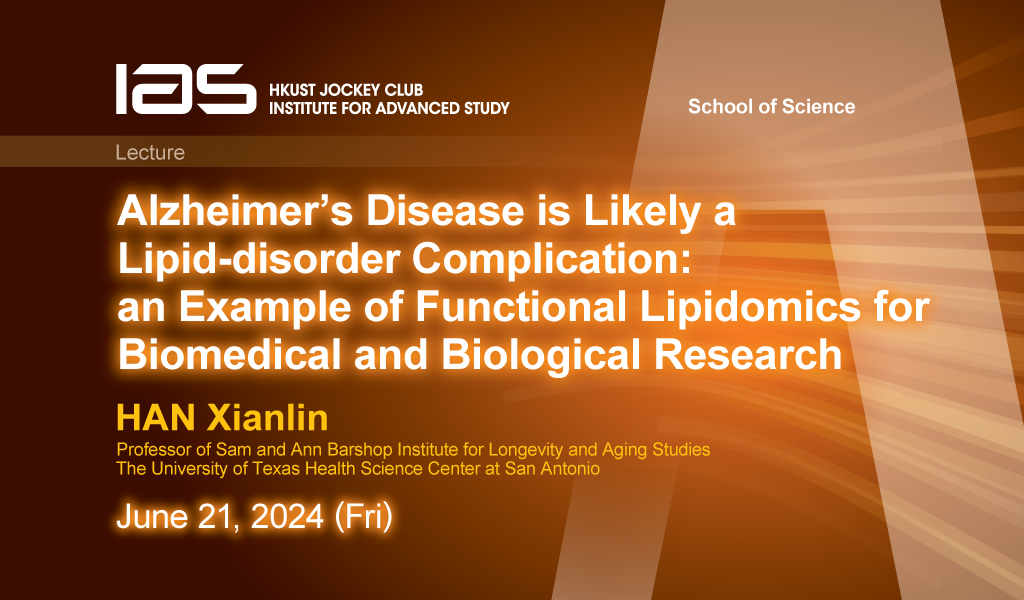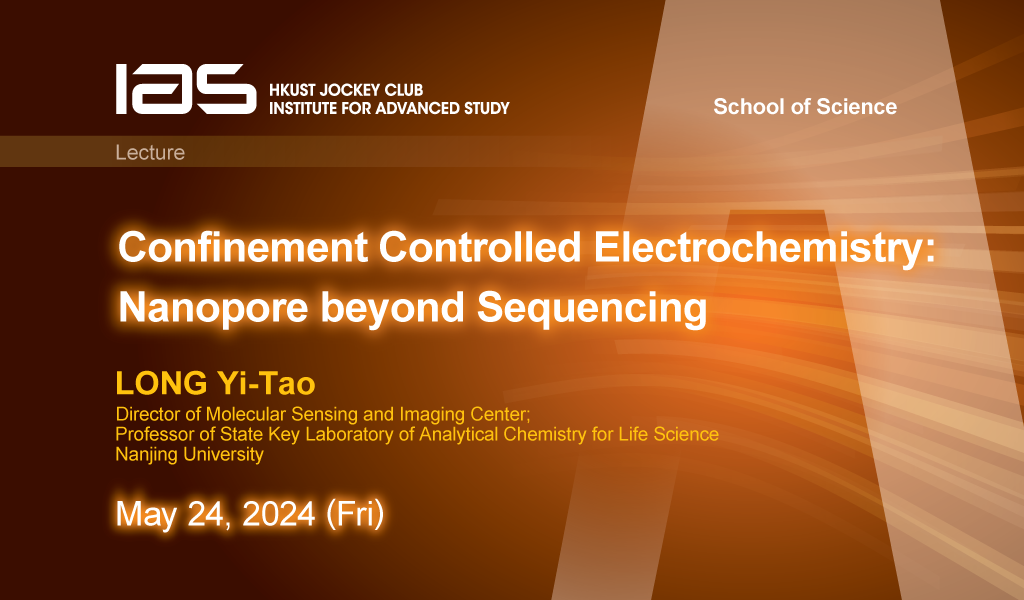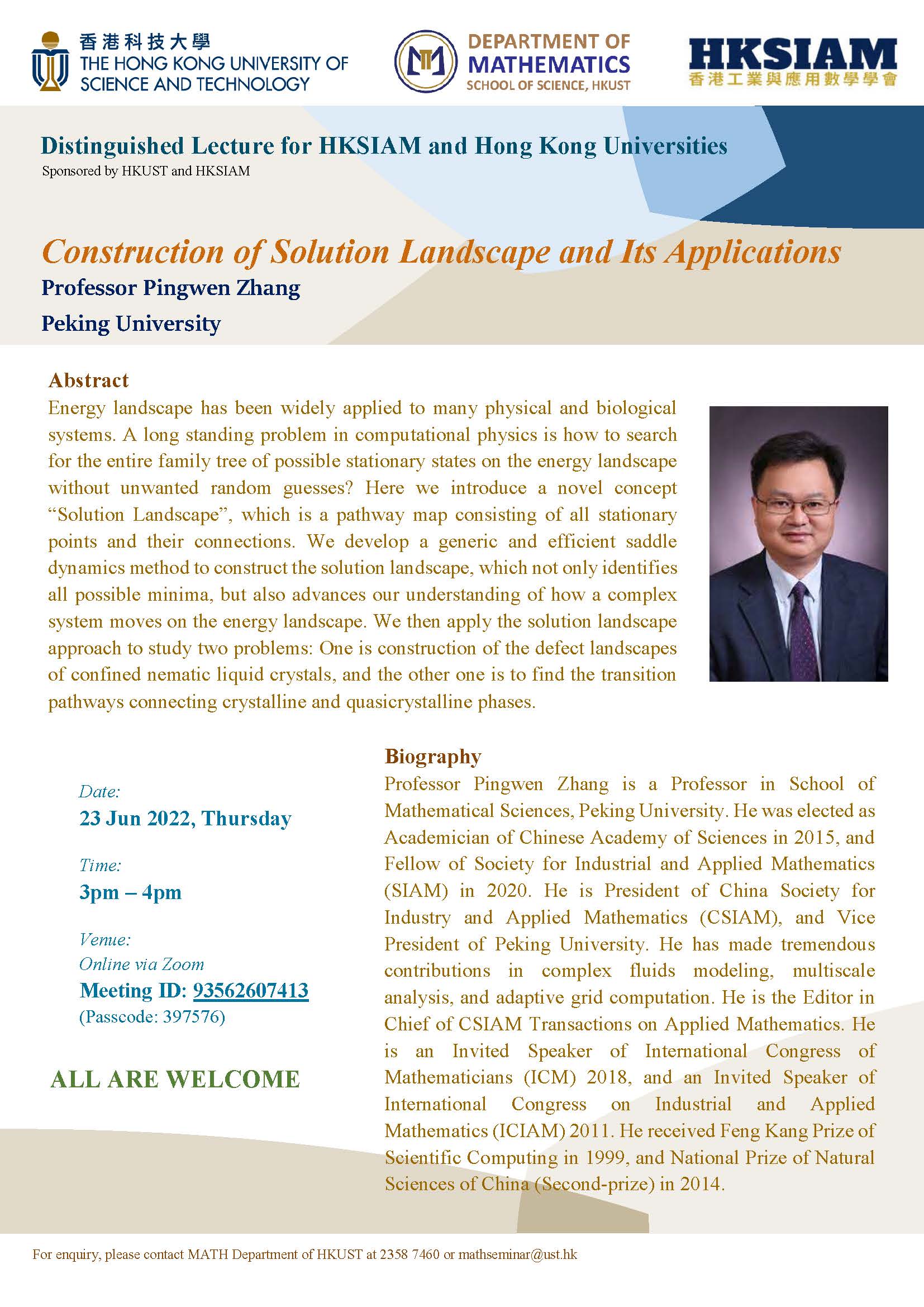Energy landscape has been widely applied to many physical and biological systems. A long standing problem in computational physics is how to search for the entire family tree of possible stationary states on the energy landscape without unwanted random guesses? Here we introduce a novel concept “Solution Landscape”, which is a pathway map consisting of all stationary points and their connections. We develop a generic and efficient saddle dynamics method to construct the solution landscape, which not only identifies all possible minima, but also advances our understanding of how a complex system moves on the energy landscape. We then apply the solution landscape approach to study two problems: One is construction of the defect landscapes of confined nematic liquid crystals, and the other one is to find the transition pathways connecting crystalline and quasicrystalline phases.

Peking University



